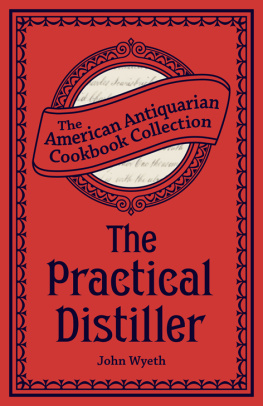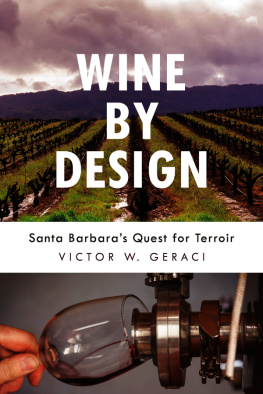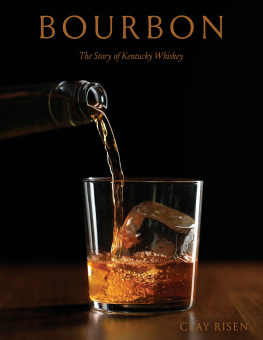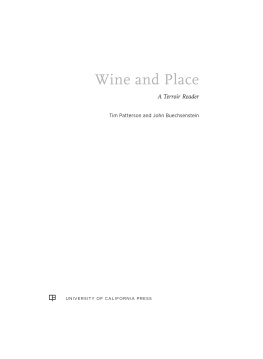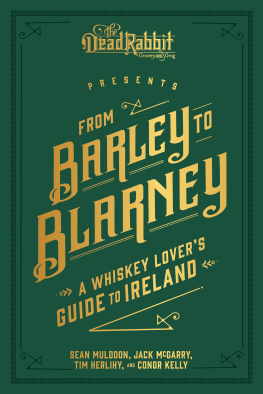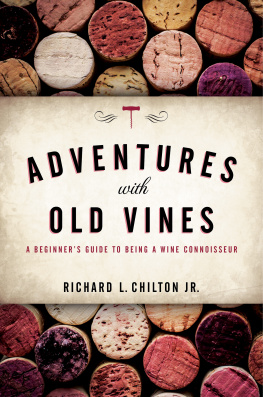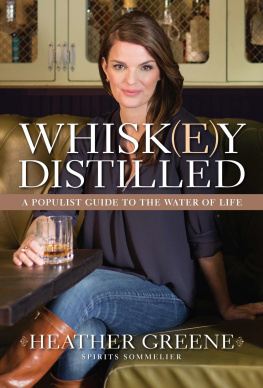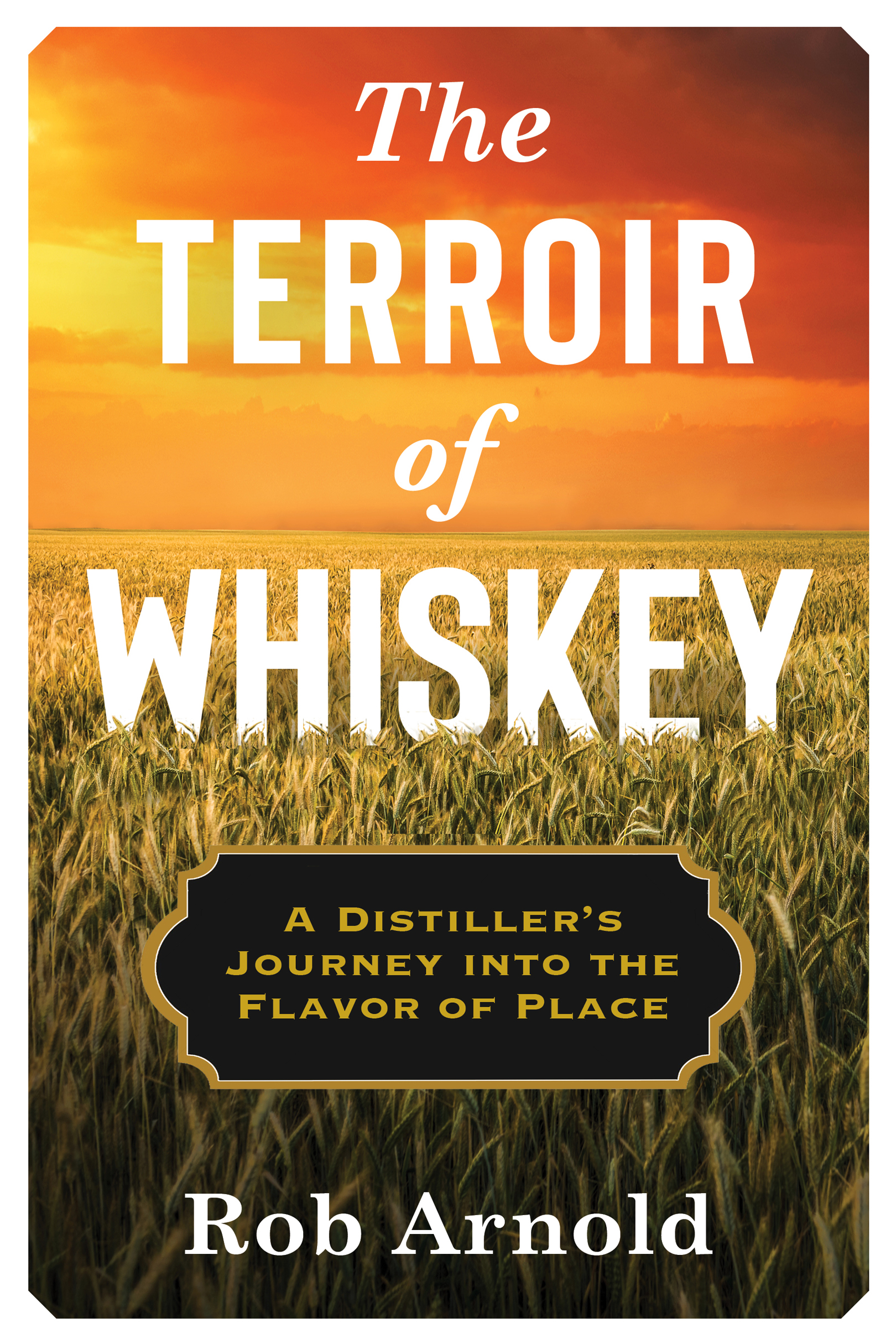Contents
Guide
Pagebreaks of the print version
THE TERROIR OF WHISKEY
ARTS AND TRADITIONS OF THE TABLE: PERSPECTIVES ON CULINARY HISTORY
ARTS AND TRADITIONS OF THE TABLE: PERSPECTIVES ON CULINARY HISTORY
Albert Sonnenfeld, Series Editor
For a complete list of titles, see .
ROB ARNOLD
THE TERROIR OF WHISKEY
A Distillers Journey Into the Flavor of Place
Columbia University Press/New York

Columbia University Press
Publishers Since 1893
New YorkChichester, West Sussex
cup.columbia.edu
Copyright 2021 Rob Arnold
All rights reserved
E-ISBN 978-0-231-55089-5
Library of Congress Cataloging-in-Publication Data
Names: Arnold, Robert, 1987 author.
Title: The terroir of whiskey : a distillers journey into the flavor of place / Rob Arnold.
Description: New York : Columbia University Press, [2021] | Series: Arts and traditions of the table: perspectives on culinary history | Includes bibliographical references and index.
Identifiers: LCCN 2020026158 (print) | LCCN 2020026159 (ebook) | ISBN 9780231194587 (hardback)
Subjects: LCSH: WhiskeyUnited States. | DistilleriesUnited States. | DistillersUnited States.
Classification: LCC TP605 .A767 2020 (print) | LCC TP605 (ebook) | DDC 663/.50092dc23
LC record available at https://lccn.loc.gov/2020026158
LC ebook record available at https://lccn.loc.gov/2020026159
A Columbia University Press E-book.
CUP would be pleased to hear about your reading experience with this e-book at .
Cover design: Noah Arlow
Cover image: Kai Tilgner / Getty Images
What we know is a drop, what we dont know is an ocean.
Isaac Newton
CONTENTS
T his is a book about whiskey, a distilled spirit made from grain and (almost always) aged in oak barrels. Whiskey is essentially distilled beer, just as brandy is distilled wine. But specifically this book is about how terroira somewhat controversial concept with an unsettled definitioncan influence the flavor of whiskey.
Terroir is a French word that describes how the flavor and characteristics of a crop (or livestock) are influenced by its environment. That includes the soil that layers the farm, the topography that shapes and molds its contours, and the climate in which it resides. At least, this is terroir in its most basic sense. And that is how I first thought of terroir when I began this book. Terroir, I gathered, was simply a romantic synonym for environment and how it influences the expression of a plants genes.
All organisms have a genome, composed of thousands, millions, or billions of deoxyribonucleic acid (DNA) base pairs. DNA is the genetic code, the underlying blueprint for all traits, including the production of chemical compounds that we perceive as flavors. The environment can control how the genetic code is read, dictating whether certain traits are expressed. Grapes, grains, cheeses, dogs, or humans, we are all influenced by our environmentour terroir. If this sounds like science jargon, you may better recognize it as nothing more than the age-old debate of nature vs. nurture. Nature is what an organism is born withits DNA. Nurture is how the reading and expression of the DNA is influenced by the environment.
The wine world is most famous for championing (and marketing) terroir. Napa Valley in California, Bordeaux in France, the Western Cape of South Africa: all of these regions possess their own terroirsdistinct soils, topographies, and climatesthat influence the growth and flavor development of grapes. Because the concept of terroir is most firmly rooted in the wine industry, its hard to discuss how the phenomenon applies to anything else without considering the parallels with wine. So while this book is about whiskey, it is necessarily also a book about wine.
I come from Louisville, Kentucky, a third-generation member of the whiskey industry. My grandfather and nearly every one of my uncles and great-uncles on my mothers side worked in bourbon. My grandfather was on the Brown-Forman company jet with the Brown family when they finalized the purchase of the Jack Daniels distillery from the Motlow family in 1956. My great-great-grandfather was a brewmaster in Germany who brought his talents to Indiana at the end of the nineteenth century. Since 2011, I have been the master distiller at the Firestone & Robertson Distilling Co. in Fort Worth, Texas. Informally, we refer to our distillery as TX Whiskey. I joined the company as their first employee after opting out of a PhD program in biochemistry at the University of Texas Southwestern Medical Center.
Most parents would be distraught to hear their son was leaving medical research to make booze. But for me, it was a little different. When I called my mom to tell her I was leaving school to make bourbon in Texas she didnt say, You cant leave school to make bourbon! She said, You cant make bourbon in Texas. You dont have the right water.
But Mom, it turns out you can make bourbon in Texas, and in any state for that matter. Kentucky has prime water for making bourbon, but so do many other states, including Texas. And Texaswith plenty of high-quality corn crops, hot summers, and winters that fluctuate between 30 degrees and 70 degrees Fahrenheit (often within the same day)is just as suited to making bourbon as Kentucky.
We distilled our first batch of bourbon at TX Whiskey in February 2012. At the time, we were making about three barrels per batch, with a maximum capacity of three batches per day. At this scale, we were actually a relatively large craft distillery, but our output was a drop in the bucket compared to the big boys in Kentucky and Tennessee. I was personally just fine with making three to nine barrels of whiskey a day. But the distillerys original proprietors, Leonard Firestone and Troy Robertson, were not. They wanted to take the big boys head on, in quality and volume.
So in 2014 they bought a declining golf course and on its hundred acres we built one of the largest whiskey distilleries west of the Mississippi River. Our output is now forty barrels per batch, with a maximum capacity of three batches per day. In 2019, we sold TX Whiskey to Pernod Ricard, the second-largest wine and spirits group in the world. We are their largest whiskey distillery in the United States.
In 2016, I decided to combine whiskey and science into a second PhD attempt, this time at Texas A&Ms distance plant-breeding program (distance meaning that I conduct my research at TX Whiskey and maintain my full-time position with the company while completing the degree), studying under the quantitative geneticist and corn breeder Dr. Seth Murray. My dissertation explores how genetic and environmental forces influence corn-derived flavors in whiskey. My hope is that the data generated can be used to breed and select new corn varieties specifically suited for whiskey production. Much of our research and the stories that surround it are covered in this book.
So through and through, I am a student, maker, and advocate of whiskey. Aside from when I am fortunate enough to tour a winery or vineyardor when I steal a sip from my wifes wineglasswine doesnt intrude on my mental or gustatory faculties. But over the years as I scoured the scientific literature on alcohol, visited wineries, and developed friendships with winemakers, I realized they pursued certain techniques that whiskey distillers were ignoring. Many of these pursuits are rooted in the concept of terroir and how the provenance of a place can translate to distinct flavors. These pursuits start not at the winery but in the vineyard. They start with the land and the grapes cultivated on it.


